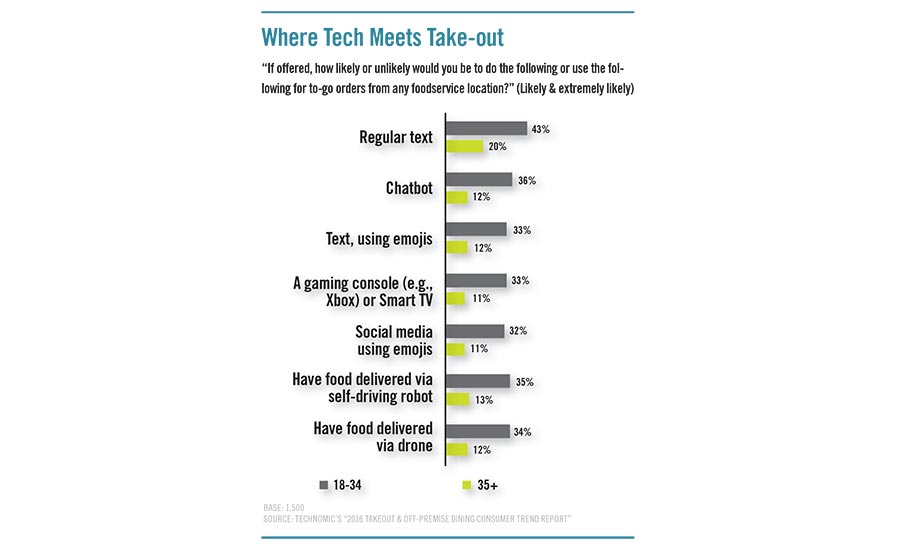About half of 18-to34-year-olds say they are ordering food to go more often now than they were three years ago. As takeout becomes a more widespread and engrained consumer habit, this service will steal a growing share of restaurant business.
Technomic’s recently released “2016 Takeout & Off-Premise Dining Consumer Trend Report” reveals how delivery will play an increasingly large role in foodservice. Nearly half of consumers aged 18-34 (46%) say they would use delivery for takeout orders at limited-service restaurants, and half of that age bracket says the same for full-service restaurants.
Delivery service is certainly growing—even at the expense of carryout service. A fifth of consumers overall (19%) and a third of consumers between the ages of 18-34 (35%) say they are increasingly replacing carryout orders with delivery orders. Although carryout orders—including drive-thru and pick-up—outweigh delivery orders three to one, younger consumers are driving the shift away from carryout and toward delivery.
Although carryout orders—including drive-thru and pick-up—outweigh delivery orders three to one, younger consumers are driving the shift away from carryout and toward delivery.With young consumers fueling on-demand delivery, we are beginning to see a proliferation of tech-friendly delivery services (and of which these young diners are particularly fond). Three fifths of consumers between 18-34 (57%) say they would use mobile ordering for takeout at LSRs, compared to 32% of their older counterparts. Additionally, a quarter of younger consumers (26%) say they are using third-party delivery more often now than a year ago. About a third of consumers are even interested in futuristic delivery methods, like self-driving robots and drones.
As delivery service picks up steam, some independents are considering delivery-only ventures to maximize profits. These are commissary-based concepts that do not have a front-of-house, so as to save on overhead. For example, NYC-based chef David Chang invested in a delivery-only restaurant called Maple and launched his own delivery-only concept called Ando. It specializes in delivery-stable foods, like chicken tenders, fried chicken and noodle bowls. Some delivery-focused LSRs likely will adapt this service model for prototypes in urban areas heavily populated by young consumers.
Another implication of delivery growth are the tech advancements that will naturally follow. We already have text message and chatbot social media ordering, but look for more one-click mobile ordering, Apple TV and Apple Watch ordering, and Amazon ordering going forward.
Originally appeared in the February, 2017 issue of Prepared Foods as Delivery Service Key to Restaurant Growth.
